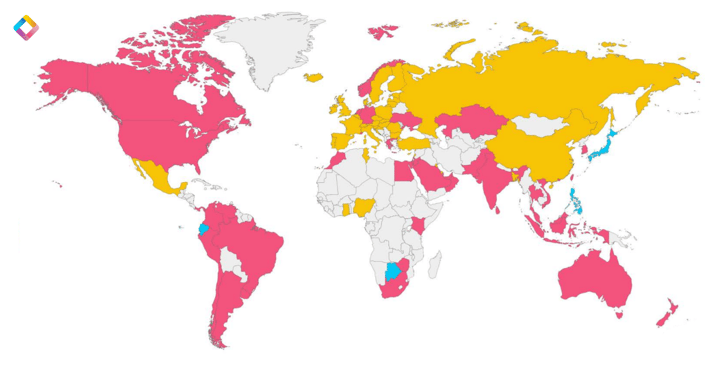This is a frequently asked question we receive from financial instrument holders looking to automate their shareholding disclosure compliance.
This question tends to arise when people learn how our clients all share one single rule set, which we and our client community consider to be our strongest advantage. This simple yet misunderstood concept of creating an industry-standard shareholding disclosure algorithm means that any single institution belongs to a community of compliance experts, and is better off as a result.
Our answer to the question surrounding whether a single rule set can handle rule flexibility, is yes. Below I have outlined reasons and examples as to why this is the case, but first it is important that I offer clarity on the way certain terms are used.
Many who work in the compliance monitoring field are used to on-premise or in-house monitoring systems, including end-to-end portfolio management systems which require a team of compliance officers or engineers to code in a way that is unique to their firm’s internal systems, legal-interpretation, and unique data quality (or limitations). Regulatory compliance with potential for disclosures in 90+ countries and how each regulation applies to the firm’s unique corporate structure leads naturally to the intuition that any compliance rule algorithm MUST be coded in a bespoke manner.
Having some of the world’s largest and most complex holders of financial instruments as our clients has shown us that a common rule set, deployed and updated continuously in the cloud CAN be tailored to handle a multitude of financial products and highly complex corporate structures (including a vast number of regional investment divisions and aggregation complexities). Dealing with the nuances of disclosure obligations does not mean one must maintain a bespoke set of rules. Many areas in which one might think that a separate customised rule must be maintained can be handled by setting up defined parameters assigned to regulatory concepts. Most (if not all) of the exemptions or peculiarities in shareholding disclosure are areas which we can (and should!) agree on conceptually. FundApps is able to add such parameters and triggers to our algorithm to increase the fit of our shared rule set. Consider how a map of a territory might have different levels of abstraction. Our rule set can be likened to a map that we can add further refinement to (topographical detail as an analogy) depending on the level of detail required for a given set of firm or security characteristics.
Enough theory. Here are some examples where it might seem that bespoke rule coding is necessary, but where each case can be handled in a flexible, shared rule set:
1. Issuer-by-issuer disqualifications from US 13G or Canada AMRS
One must generally maintain at least two sets of rule calculations for the disclosure obligations found in United States Section 13 (of the U.S. Securities Exchange Act of 1934) rules and the Canadian major shareholding rules regarding AMRS (Alternative Monthly Reporting System) or Early Warning disclosures. In both cases, the decision of whether to apply 13D vs 13G, or AMRS vs. Early Warning logic hinges on specific attributes of the entities which hold the relevant, reportable assets. If a company is a U.S. Qualified Institutional Investor or considered a passive investor under the rules in the US (Section 240.13d-1(c) and Section 240.13d-1(b)) or an Eligible Institutional Investor (EII) in Canada , the relevant holdings of such entities are reportable under the 13G rules in the U.S. or under the AMRS regime in Canada, respectively.
In both countries, disclosure under the less onerous (less frequent disclosure) regime (AMRS or 13G) is not allowed for a specific issuer if a) for Canada, the holder gains “effective control” of the reporting issuer or solicits proxies from security holders in certain cases, or b) for the U.S., the holder has an intention or has the purpose of affecting or influencing control of a specific issuer. In such cases, a firm will require their entities to stay under the AMRS or 13G regime generally, but will require specific issuers carved out to be reportable under the Early Warning or 13D regime on a case-by-case basis according to the conditions outlined. This can all be done in a single rule algorithm by making use of entity and issuer specific data.
2. Firm-specific disaggregation exemptions
In most regimes that have shareholding disclosure requirements, there are requirements to aggregate security holdings across most (or all) entities in a firm’s corporate tree where there is common control or some level of ownership. The regulatory requirements to aggregate assets to ensure compliance with disclosure thresholds across countries may include exemption criteria, so that a single investment management division, for example, can fulfil the reporting obligation individually, without a parent (controlling) entity aggregating and counting the management division’s assets. This is commonly referred to as “disaggregation.”

However, the satisfaction of the criteria should be done on a country-by-country or even regime-level basis and in many cases be agreed or validated by individual regulators! Such exemptions mean that the standard requirements that apply in a given rule algorithm will need modification on a country, or regime specific basis. Some might think this also requires customised rules, but it doesn’t. By designing both rule and corporate tree aggregation logic which can handle regime and client specific disaggregation, we continue to maintain a single rule set which is kept up to date with regulatory change while still being tailored to unique corporate structures.
3. Market Maker exemptions from standard disclosure calculations
In a number of regulatory jurisdictions, holdings by entities in a firm which act in a market making capacity are not required to be counted towards the same thresholds or in the same manner as other entities which hold assets for discretionary investment management or even proprietary trading. For financial institutions which comprise holdings in a sell-side capacity alone or in combination with buy-side activities, taking advantage of reduced disclosure obligations where market-making exemptions exists is important. Identifying securities held in such a manner, while still aggregating other assets correctly can be an onerous task, especially if relying on a spreadsheet or a proprietary system which doesn’t benefit from being kept up to date with changes in the regulatory framework. It also might seem that doing so in a single, shared rule algorithm is impossible. At FundApps, we know that it is possible as we have already started to accommodate such firm-specific attributes into our rules. We do so by handling company structure data in a way which ensures market making exemptions can be applied, while the rest of the firm complies with the standard regime concurrently.
I hope this article sheds some light on some of the ways that FundApps can accommodate firm-specific characteristics and deep regulatory nuances, while keeping the power of a single rule set for our growing client community. If there are other cases where you might have the impression that a shared rule set cannot capture regulatory nuance in this area, please let us know! We’d be keen to discuss such cases and ultimately prove to you that they can be accommodated.
If you would like to find out more about our Shareholding Disclosure service and how it can help you, then get in touch here.
